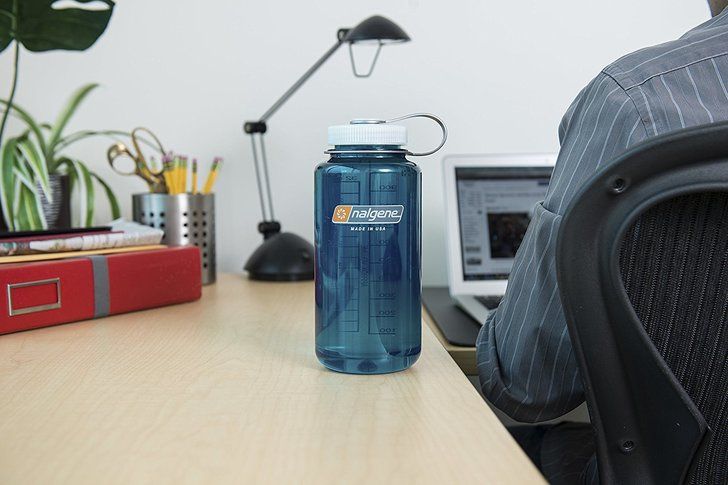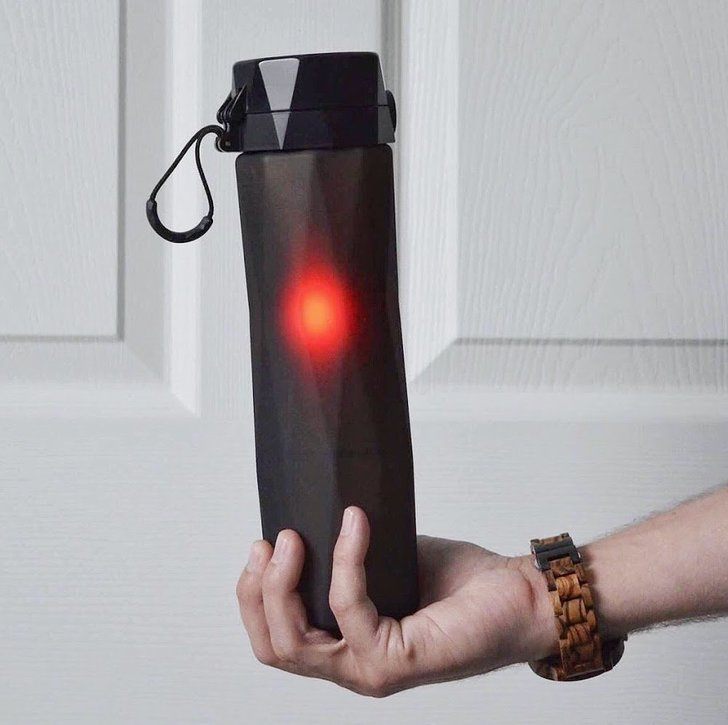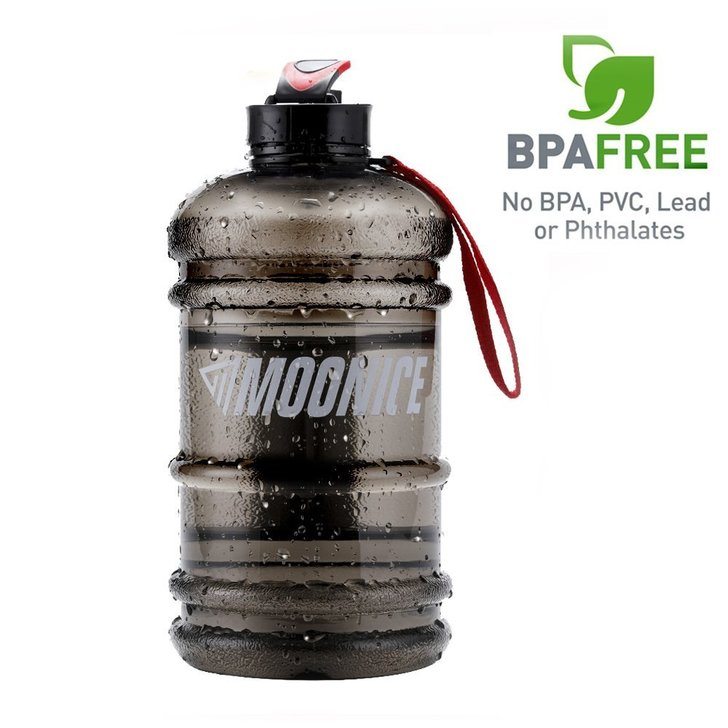
Around the world, one million plastic bottles are purchased every minute. That’s about 20,000 bottles bought and sold per second and an unbelievable 525.6 trillion per year.
As our insatiable thirst for portable, single use plastic bottles continues to rise, so does the impact of throwaway plastics.
The Life Cycle of a Plastic Bottle
The making of plastic bottles begins with oil. The majority of single use plastic bottles are manufactured out of PET (polyethylene terephthalate), a thermoplastic derived from crude oil and natural gas. PET resin is then formulated into small pellets that are molded to create a ‘preform’, a rudimentary container that looks like a test tube with cap threads. The preforms are heated, stretched, and blown into their final bottle shape.
Between the raw resource extraction, the energy required to produce PET resin, and bottle shaping processing, it is estimated that the plastic bottle industry requires 50 million barrels of oil each year. Bear in mind that this figure does not include the energy needed to clean, fill, seal, and label the bottles, or the transportation from the factory, to the store, to your home.
Although PET is a highly recyclable material, 91% of plastics are not recycled and end up in a landfill. In the US alone, the recycling rate for plastic bottles was a mere 31.1% in 2015.
The plastic bottles that are diverted away from the landfill can then be turned into other items like carpet, clothing, and construction materials. But when these goods eventually need replacing, they will eventually end up at the dump too.
Plastics in Our Oceans
PET plastics take around 400 years to decompose in a landfill – if they stay in the landfill.
Although trash that ends up in the ocean can be caused by plastics blowing out of the dump and into waterways and by beach-going litterers, the major source of ocean plastic is just 10 rivers: The Yangtze, the Indus, Yellow River, Hai River, the Nile, the Ganges, Pearl River, Amur River, the Niger, and the Mekong. What these rivers have in common are a proximity to high populations of people and inadequate waste collection infrastructure.
So much plastic is being deposited into the oceans that, by 2050, it is estimated that, by weight, there will be more plastics than fish. To get a glimpse of what the future holds, check out this heartbreaking video of a diver in Bali, shot just a few days ago.
The ecological impact of ocean plastic will be far reaching and profound. In addition to the toxicity to marine life itself, micro plastics have been found in seafood – posing a genuine threat to food safety.
No Better Than Tap Water
There is a widely held misconception that bottled water is somehow healthier and purer than tap water. Bottled water is sourced from municipal tap water or surface and groundwater systems. While some bottled water is simply untreated tap water, purified varieties do receive extra treatment at the bottling plant. But even purified water isn’t held to the same rigorous standards as city municipal water; bottled water producers are only required to test for coliform bacteria once per week while city tap water is tested at least 100 times per month.
After a four year review, the National Resources Defense Council concluded that there is no evidence that bottled water is any safer or healthier than tap. In fact, according to independent testing by the Environmental Working Group, 10 popular water brands in the US contained 38 pollutants, including bacteria, fertilizer, Tylenol, and industrial chemicals.
If you are concerned about the quality of your tap water, you can have your water tested for contaminants by phoning your local health department or a state certified lab by calling the Safe Drinking Water hotline at 1-800-426-4791 or by clicking here. You can also test for bacteria, lead, pesticides, nitrates, nitrites, and chlorine by picking up an inexpensive water testing kit.
If you dislike the taste of the water that comes out of your tap, consider picking up a home filtration system like this one to remove odors caused by chlorine, copper, mercury, and cadmium.
The High Price of Bottled Water
Globally, the bottled water market was valued at $170 billion in 2014 and is on track to reach $280 billion by 2020.
Outpacing soda sales for the first time ever in 2017, bottled water companies source their water from natural springs, underground aquifers, and municipal systems – which they often pay practically nothing for.
Compared to the price of tap water, at an average cost of $1.22 per gallon, consumers are paying 300 times more for the bottled variety. But that’s only if you purchase bottled water in bulk; single 16.9 ounce bottles are 2,000 times more expensive than what comes out of the tap.
8 Eco-Friendly Alternatives to the Plastic Bottle
By investing in a reusable water bottle, you are doing your part to prevent plastic waste while putting some extra money back into your pocket.
1. Tree Tribe Stainless Steel Water Bottle
Backed by a lifetime warranty, Tree Tribe’s water bottles are sleek, durable, and made to last. Insulated with a double wall vacuum seal, it will keep water cold for 24 hours and hot beverages warm for 6 to 10 hours. Available in blue and black, in addition to the unpainted steel look, Tree Tribe plants 10 trees for each bottle sold.
Check the price on Amazon here.
2. Ello Pure Glass Water Bottle
Offering the clean taste of a glass bottle with the durability and grip of a protective silicone sleeve, Ello Pure’s line of bottles are stylish and practical. Ello Pure comes in a range of fun colors and your choice of circles or squares sleeve design. And because it’s made of glass, it won’t stain, smell, or impart a metallic or plasticky taste.
Check the price on Amazon here.
3. Willceal Fruit Infuser Water Bottle
Made from Eastman Tritan plastic, which is BPA-free, durable, and recyclable, the Willceal bottle has an extra large infuser basket – perfect for packing in fruits and veggies for a vitamin enriched bevvie.
Check the price on Amazon here.
4. Nalgene Water Bottle
Providing refillable water bottles long before plastics became such an environmental concern, Nalgene was popular with campers, hikers, wilderness enthusiasts, and backpackers in the 1970s. Made from BPA-free Tritan plastic, Nalgene bottles are shatter-proof and will easily last a lifetime. With a wide mouth and 32 ounce capacity, these bottles are ideal for those longer treks.
Check the price on Amazon here.
5. Hidrate Spark 2.0 Smart Water Bottle
An excellent choice for those who forget to keep hydrated, the Hidrate Spark is a “smart” bottle that will glow when it’s time to take a drink. It syncs up with iOS and Android phones and integrates with Fitbit, Apple Watch, Under Armor Record and other fitness tracking apps and gadgets to track your water intake.
Check the price on Amazon here.
6. Reduce WaterWeek Kids Water Bottle Set
A Monday to Friday set for each day of the school week, Reduce makes a BPA-free bottle set just for the kids. With a 10 ounce capacity and colorful bottle designs, these are the perfect size to tuck into your child’s lunch box.
Check the price on Amazon here.
7. Moonice Large Capacity Water Bottle
For those with an unquenchable thirst, Moonice makes a half gallon water jug – so you can get the exact amount of recommended water intake each day. It’s fashioned with a push cap and a durable handle so the jug is easy to drink from all day long.
Check the price on Amazon here.
8. Shrink Collapsible Silicone Water Bottle
Made from flexible silicone, Shrink’s 24 ounce water bottles are lightweight and fully collapsible, going from 10 inches at full size to a nice and compact 2 inches. Great for people with active lifestyles and travelers, it comes fitted with a carabiner so you can clip it to your backpack or belt loop.
Check the price on Amazon here.








